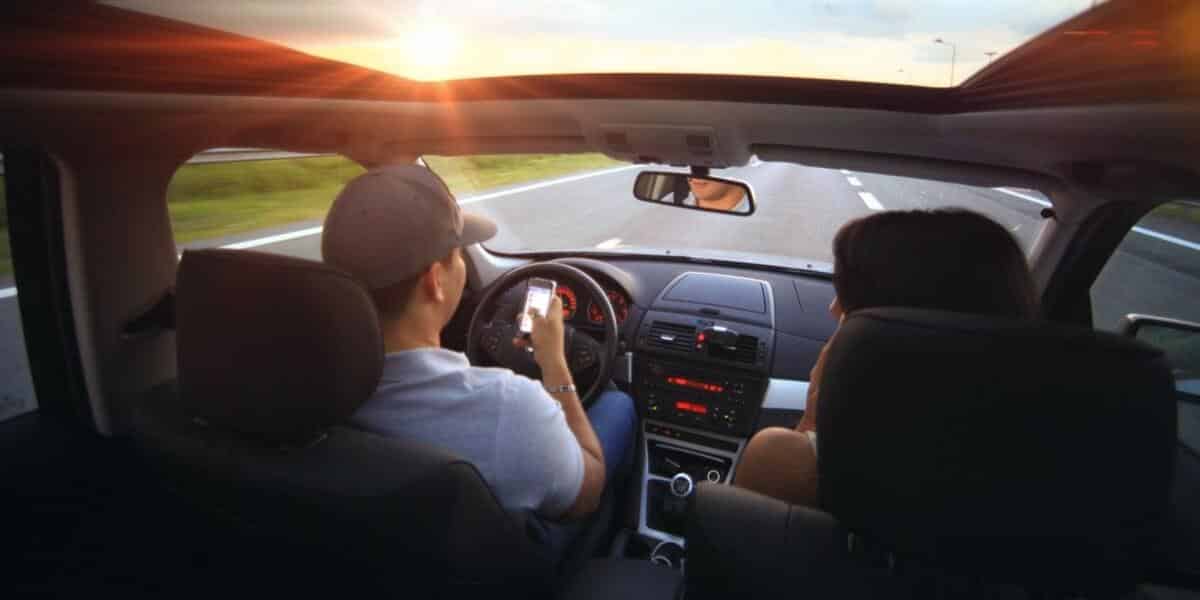We all know how dangerous it is. Reading a text. Responding. While trying to keep our minds and eyes on the road. It doesn’t work. “Multi-tasking” is a myth: when it comes to driving, there is only one task on which we need to focus. Driving. Or else you’ll end up in a car accident.
Florida distracted driving laws have changed. Why doesn’t everyone know about it? Unfortunately, the publicity campaign around this topic was yanked, so the change isn’t getting a ton of coverage. You’re going to have to know your texting and driving facts, though, because it’s now illegal to do the two together.
What’s Changing?
As of Oct. 1, 2019, texting while driving has been banned. The tickets you’ll get are fairly reasonable. The first offense is $30, and the second is $60. Nonetheless, why get any fine if you can avoid it? And why text and drive when it’s become clear that doing so increases your risk of an accident?
To best understand what qualifies as texting while driving, consider the language of the law:
“A person may not operate a motor vehicle while manually typing or entering multiple letters, numbers, symbols, or other characters into a wireless communications device or while sending or reading data on such a device for the purpose of non-voice interpersonal communication, including, but not limited to, communication methods known as texting, emailing, and instant messaging.”
A first offense will not carry any points on your license, but if you’re cited twice in a five-year period, you will be issued points.
That seems pretty clear cut: don’t text and drive. There are some exceptions that you need to know.
What Are The Exceptions?
There are sensible exceptions to the rule. For instance, when a vehicle is stationary, the law doesn’t consider it subject to the texting ban. In other words, you can pick up your phone so long as your vehicle is stopped. That means it’s OK to take a quick glance while stationary at a red light. This does not mean it’s OK to do so while creeping forward. Stationary means stationary.
You can also text while driving if you’re reporting an emergency or criminal activity to law enforcement. Reading messages related to navigation is still OK, as is reading messages about the vehicle’s operation. You can also still read safety information like alerts about emergencies, traffic, and weather.
Can Police Pull Me Over for Texting?
Police aren’t supposed to pull you over just for texting. The texting ban is a secondary offense. A secondary offense means that it can only be cited if the officer pulled you over for a different, primary violation (e.g., speeding).
If you’re pulled over for speeding or running a stop sign, then law enforcement can also cite you for texting while driving. If they have no reason for pulling you over in the first place, they’re not supposed to do so simply to cite you for texting while driving.
The offense is considered worse if texting in a school zone or when an accident is involved. Considering that the National Safety Council reports that cell phone use leads to 1.6 million accidents a year, there is an increased risk of an accident while texting.
Texting and Driving Facts
- Consider how clear the information about drunk driving is. It’s obvious that you shouldn’t drive while drunk. Texting isn’t considered as “bad” like drunk driving, yet it’s 6 times more likely to cause an accident. It’s even more dangerous! Put the phone down. Wait to answer a call or respond to a text. You can always pull over – or just hold on for a few minutes. It’s worth your life.
- How can texting possibly be so dangerous? Think about the amount of time you take your eyes off the road. The average text means you’re looking elsewhere for five seconds. If you’re going at 55 mph, that’s enough time to travel 100 yards. If someone’s stomped on the brakes in front of you, someone’s changed lanes, or someone runs into the road, you may not have time to stop and avoid an accident.
- Keep in mind that five seconds is only an average. It could be two, five, ten… or more. If someone said you could drive but you’d randomly go blind for stretches as long as 10 seconds, you’d never get behind the wheel. It would be too dangerous. You certainly wouldn’t want other people driving like that. Yet this is what someone does every time they answer a text.
- Ensure that your children know the new Florida distracted driving law and take it seriously. Of all fatal accidents involving teen drivers, a whopping 21% are caused by cell phone distraction. The text can wait.
- While 94% of drivers support a ban on texting while operating a vehicle, 35% still text and drive anyway. You don’t need to break out a calculator to realize that are a lot of people who support a ban that they’d violate regularly.
To many, this is a rule that applies to others, but not to themselves. They imagine it could never happen to them because they’re somehow more responsible than others. This is not realistic. Everyone who gets into an accident and injures themselves or someone else while texting imagined that it wouldn’t happen to them. If they imagined it would, they wouldn’t have texted while driving.
If you or someone you love is injured by someone who’s texting and driving, you may be able to prove the other driver was acting carelessly. It’s wise in this case to speak with a car accident lawyer about what you can do to ensure financial compensation for physical trauma and the financial and emotional trauma that can result from it.






